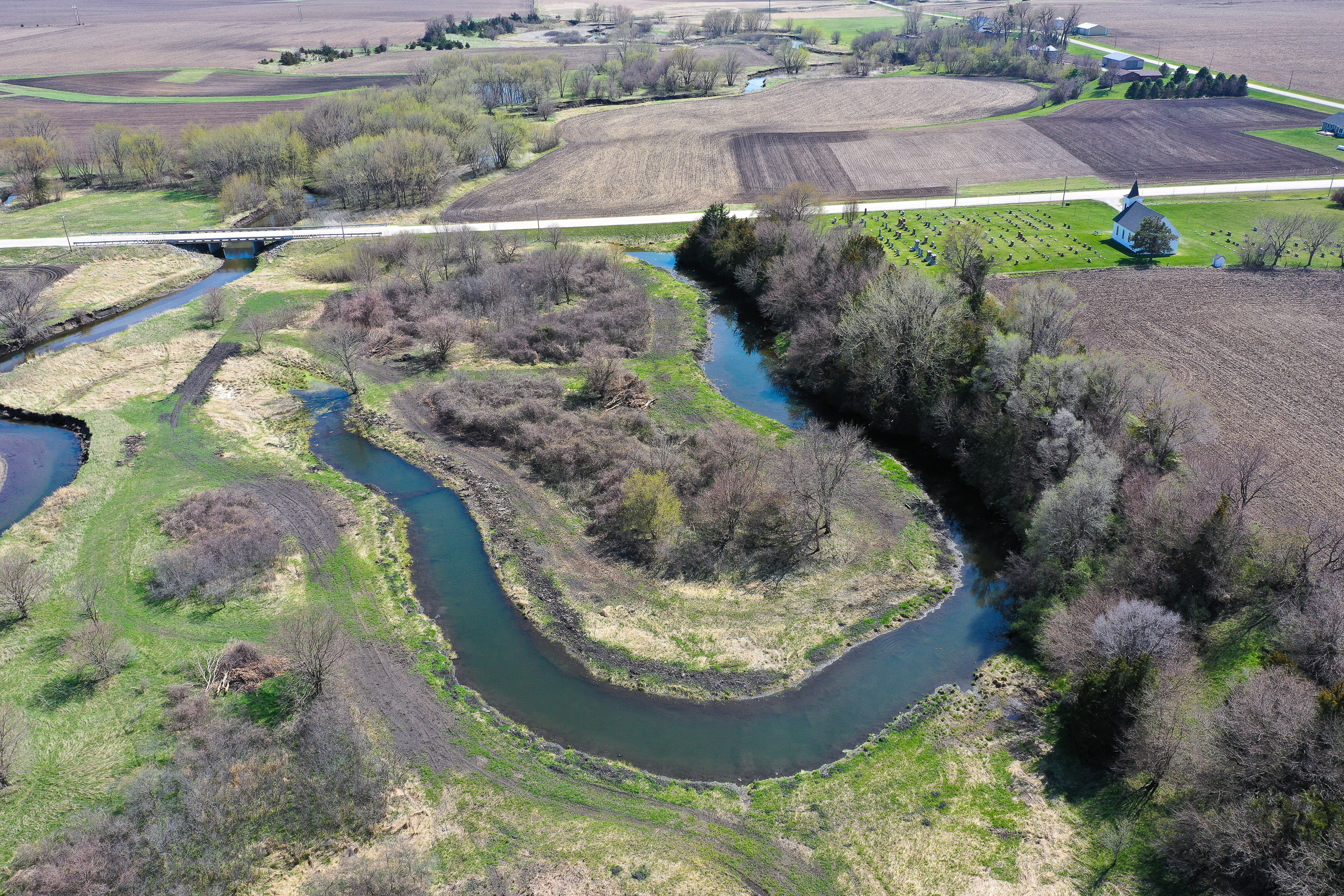
Federal funds will support continued farmer-led efforts to enhance water quality through conservation practice adoption. (Photo Credit: Joseph L. Murphy/Iowa Soybean Association)
Soybean Farmers Applaud $60M Water Quality Investment in Hypoxia Task Force States
June 16, 2022 | Brock Johnston
Ankeny, Iowa – The Iowa Dept. of Agriculture and Land Stewardship (IDALS) and the U.S. Environmental Protection Agency (EPA) announced $60 million in federal Bipartisan Infrastructure Law funds for Mississippi River-Gulf of Mexico Hypoxia Task Force (Task Force) states to support water quality improvements and advance nutrient reduction strategies.
On June 10, partner stakeholders joined Iowa Secretary of Agriculture Mike Naig and EPA Assistant Administrator for Office of Water Radhika Fox, co-chairs of the Task Force, in Des Moines to highlight the multi-state investment. The funds will support continued statewide efforts by Iowa farmers and landowners to implement and scale edge-of-field practices, including constructed wetlands, bioreactors, saturated buffers and more.
“This announcement is consistent with much of the work Iowa farmers and other stakeholders have been doing as part of Iowa’s Nutrient Reduction Strategy,” said Roger Wolf, director of the Iowa Soybean Association’s (ISA) Research Center for Farming Innovation. “EPA’s investment demonstrates their support for progress the states are making and encouraging more work yet to come.”
The Task Force provides direction and support for coordinated action of participating organizations working to reduce nitrogen and phosphorus exports within the Mississippi/Atchafalaya River Basin and the Gulf of Mexico. The group is comprised of federal and state agencies, including IDALS, as well as tribes represented by the National Tribal Water Council.
“Farmers are often looking for ways to elevate the stewardship goals of their operation,” said Robb Ewoldt, ISA president and soybean farmer from Davenport. “Collaboration at the federal, state and local levels directly impact conservation practice implementation and scope across our state. These funds will foster opportunities for practice adoption that produce tangible results for all Iowans and the environment.”
A recent report published by ISA researchers found the annual average nitrate concentration (mg/L) at over half (54%) of 1,800 tile monitoring sites throughout Iowa fell within a “medium” range. ISA researchers and others in the Midwest typically observe nitrate concentrations in this range for corn/soybean or continuous corn rotations using standard farm management practices. It indicates, however, the need for additional nutrient strategies, including cover crops or edge-of-field practices, to meet state nutrient reduction goals. Only 12% of monitored sites showed a strong need for changing current nutrient management practices.
Although many sources contribute to nitrogen in surface water, subsurface drainage is a primary mode of nitrogen delivery. In 2021, ISA’s EPA-accredited water lab analyzed more than 4,100 individual samples from 20 water monitoring sites across the state for common nutrients like nitrate, nitrite and phosphorus. The facility also tests for turbidity, total phosphorus and ammonia nitrogen.
Both in- and edge-of-field practices, including reduced tillage, no-till, cover crop adoption, bioreactors, saturated buffers and constructed wetlands, are research-backed strategies to build soil health and improve water quality.
Interested in learning more about environmental stewardship opportunities? Complete a brief interest form and let ISA researchers help you find the right fit for your farm.
###
Funded by the soybean checkoff
The Iowa Soybean Association is Driven To Deliver market demand, production research, information and insights and regulatory action benefiting Iowa's 37,000 soybean farmers and the industry. For more information, visit iasoybeans.com.
Back